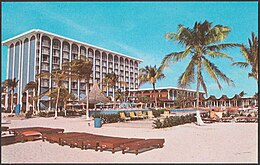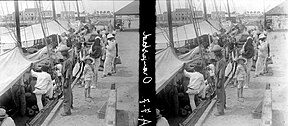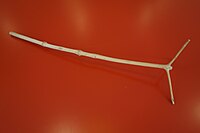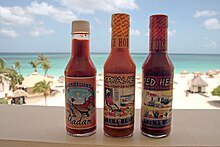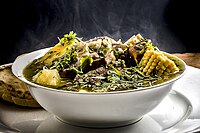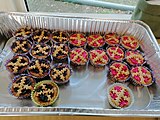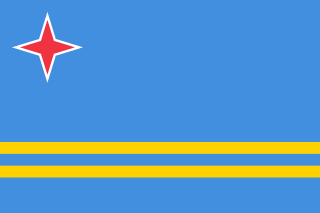
Aruba, officially known as the Country of Aruba, is a constituent country within the Kingdom of the Netherlands, situated in the south of the Caribbean Sea. Aruba is located approximately 29 kilometres (18 mi) north of the Venezuelan peninsula of Paraguaná and 80 kilometres (50 mi) northwest of Curaçao.

Transport in Aruba is facilitated by road, air, and rail. Aruba features a well-established road network, with the majority of the roads being paved. However, as one ventures towards the interior of the island, the prevalence of paved roads decreases, giving way to more rugged terrain. Conversely, coastal areas typically offer-well maintained paved roads. Aruba's road network covers a total distance of about 998 kilometres (620 mi), with 361 kilometres (220 mi) remaining unpaved.
The music of the Lesser Antilles encompasses the music of this chain of small islands making up the eastern and southern portion of the West Indies. Lesser Antillean music is part of the broader category of Caribbean music; much of the folk and popular music is also a part of the Afro-American musical complex, being a mixture of African, European and indigenous American elements. The Lesser Antilles' musical cultures are largely based on the music of African slaves brought by European traders and colonizers. The African musical elements are a hybrid of instruments and styles from numerous West African tribes, while the European slaveholders added their own musics into the mix, as did immigrants from India. In many ways, the Lesser Antilles can be musically divided based on which nation colonized them.
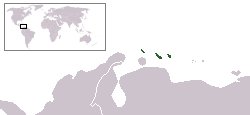
Papiamento or Papiamentu is a Portuguese-based creole language spoken in the Dutch Caribbean. It is the most widely spoken language on the Caribbean ABC islands.

Oranjestad, the capital and most populous of Aruba's eight regions, is located on the southwestern coast of the island. In Papiamento, the local language, Oranjestad is commonly referred to as "Playa" by the locals.

Gilberto François "Betico" Croes was an Aruban political activist who was a proponent for Aruba's separation from the Netherlands Antilles. This eventually occurred in 1986, but following a car accident on 31 December 1985, Croes lapsed into a coma and never became conscious to see his accomplishment. He is best remembered as "Libertador" (liberator) and as the father of the Aruban people.
The music of the former Netherlands Antilles is a mixture of native, African and European elements, and is closely connected with trends from neighboring countries such as Venezuela and Colombia and islands such as Puerto Rico, Cuba, Santo Domingo, Haiti, Martinique, Trinidad, Dominica, and Guadeloupe. The former Netherlands Antilles islands of Curaçao and Aruba are known for their typical waltzes, danzas, mazurkas and a kind of music called tumba, which is named after the conga drums that accompany it.
The music of Curaçao is known for typical waltzes, danzas, mazurkas and a kind of music called tumba, which is named after the conga drums that accompany it.
Tiara Air N.V., operating as Tiara Air Aruba, was an airline headquartered and Oranjestad, Aruba in the Dutch Caribbean. The airline, which began operations in 2006, operated scheduled flights to Bonaire, Colombia, Curacao, the United States and Venezuela. The airlines fleet consisted of the Shorts 360 and Boeing 737 aircraft for passenger operations, with a Learjet 35 for ambulance and private operations.
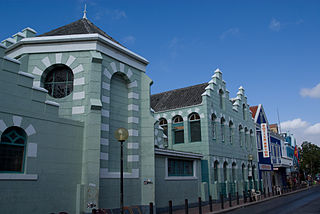
The Roman Catholic Diocese of Willemstad is a diocese of the Latin Church of the Roman Catholic Church in the Caribbean. The diocese encompasses the territory of the Kingdom of the Netherlands in the Caribbean: the countries Aruba, Curaçao, Sint Maarten and the islands Bonaire, St. Eustatius, Saba. The cathedra is in the city of Curaçao. The diocese is a suffragan of the Archdiocese of Port of Spain, and a member of the Antilles Episcopal Conference.

Lesbian, gay, bisexual, and transgender (LGBT) persons in Aruba, which is a constituent country of the Kingdom of the Netherlands, have evolved remarkably in the past decades. Both male and female same-sex sexual activity are legal in Aruba, but same-sex marriage is not legal. Same-sex couples with Dutch nationality must travel to the Netherlands or its special municipalities to get married and the legal protection of marriage is not unconditional. Since 1 September 2021, registered partnerships have been available to both opposite-sex and same-sex couples.

The Netherlands Antilles was an autonomous Caribbean country within the Kingdom of the Netherlands. It was dissolved on 10 October 2010.

Canashito, also known as Cornachiti or Carachito, is located inland on a limestone outcrop, near Hooiberg, in Santa Cruz, Aruba, measuring 63.2 metres (207 ft) in elevation above sea level. This toponym Canashito is thought to have possible Amerindian origin. This limestone outcrop is of significance as a notable Archaic period site.
Papiamento has two standardised orthographies, one used on the island of Aruba and the other on the islands of Curaçao and Bonaire. The Aruban orthography is more etymological in nature, while the other is more phonemic. Among the differences between the two standards, one obvious difference is the way the name of the language is written. In Aruba it is written Papiamento, while in Curaçao and Bonaire it is written Papiamentu. The governments of Curaçao and Aruba formally standardised orthographic rules in 1976 and 1977, respectively.

Jan Hendrik Albert "Henny" Eman was an Aruban politician and founder of the Aruban People's Party who led the movement for Aruba's autonomy from Curaçao. His grandson went on to become the first Prime Minister of Aruba.
Same-sex marriage has been legal in Bonaire, Sint Eustatius and Saba since 10 October 2012, the effective date of legislation passed by the States General of the Netherlands enabling same-sex couples to marry.
Island council elections were held in the Netherlands Antilles on 29 April and 6 May 1983 to elect the members of the island councils of its six island territories. The election was won by the People's Electoral Movement in Aruba, the Bonaire Democratic Party in Bonaire, the New Antilles Movement in Curaçao, the Windward Islands People's Movement in Saba, the Democratic Party Statia in Sint Eustatius, and the Democratic Party in Sint Maarten.

Pastechi is a traditional Aruban breakfast or snack that is a crescent-shaped deep-fried dough with a filling. It is similar to an empanada, although empanadas often have a cornmeal crust whereas pastechis often have a plain pastry shell. The dough tends to be slightly sweet. The fillings can also be quite different. The filling widely varies and can include meat, seafood, vegetables, or cheese. The filling can also be combined with other ingredients such as onions, peppers, celery stalks, raisins, cumin, and nutmeg. Leftover meats, often roast chicken or pork, can be used for the recipe.
Antonius Johannes van Koolwijk was a Dutch clergyman of the Roman Catholic Church. His notable contributions lie in the field of archeological research, particularly his studies on the indigenous culture of Aruba, Bonaire, and Curaçao during the late 19th century. Van Koolwijk is recognized as the pioneering archeologist of the ABC islands.
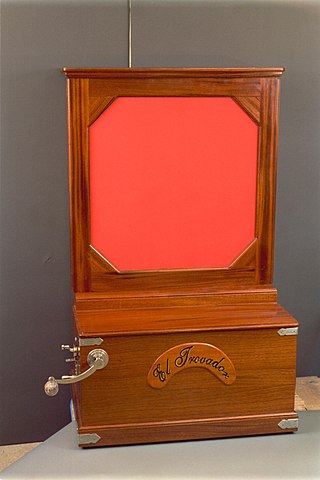
Caha di orgel is a mechanical music instrument that bridges the gap between a barrel piano and an organ.




